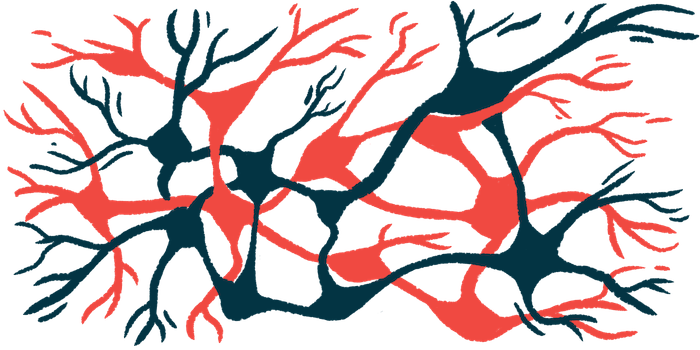Microglia may protect neurons in brain during Parkinson’s early stages
Immune cells known for neuroinflammation, but quick loss damaging to mice

Microglia — the brain’s primary immune cells — can help to keep motor symptoms of Parkinson’s disease from quickly advancing in early disease stages, work in a mouse disease model suggests.
Its findings support studies indicating both a neuroprotective and damaging role for these immune cells over the disease’s course, its researchers noted.
The study, “Microglial depletion exacerbates motor impairment and dopaminergic neuron loss in a 6-OHDA model of Parkinson’s disease,” was published in the Journal of Neuroimmunology.
Microglia promote neuroinflammation in brain by turning overly active
Under normal circumstances, microglia work to keep neurons in the brain healthy by going about and sampling their surroundings for signs of infection and damage.
In Parkinson’s and other neurodegenerative diseases, a buildup of incorrectly shaped (misfolded) proteins put microglia on constant alert. In response, microglia become overly activated and can release toxic molecules that damage neurons.
Parkinson’s is caused by a progressive loss of dopamine-producing neurons in the substantia nigra, a brain region that controls movement and coordination. Dopamine is a major brain chemical messenger.
It is thought that overly activated microglia promote Parkinson’s symptoms through “the sustained release of neuroinflammatory factors, which aggravates cell death and contributes to disease progression,” the researchers wrote.
But more recent studies suggest that microglia might be guarding against damage to the brain in early stages of the disease.
To find out how microglia might be protective in early Parkinson’s, researchers in the U.S. and Brazil turned to a mouse model that develops Parkinson’s-like features and symptoms after injection with a neurotoxic chemical called 6-OHDA.
Within seven days of 6-OHDA administration, these mice show a rapid loss of neurons in the substantia nigra, followed by a milder loss that lasts up to six weeks, with “substantial locomotor deficits” becoming apparent at two weeks post-injection. Early disease in this model, therefore, is defined as the first two weeks after 6-OHDA injection — corresponding to the first four years of the disease in patients, the team noted.
Starting a few weeks before the toxin’s use and continuing through the study’s end, mice were fed either a normal chow or a chow that contained PLX5622, a chemical that can kill up to 99% of microglia without causing inflammation or behavioral or cognitive changes.
Motor impairment at two weeks in the 6-OHDA mouse model was even more pronounced in those on the PLX5622-rich chow. Healthy mice given the PLX5622 diet, in contrast, showed no differences in motor skills.
6-OHDA’s use reduced by nearly half the number of neurons in the substantia nigra of mice in the disease model overall, but those also with PLX5622-induced microglia depletion had less than one-third of the neurons normally in that region.
“These results indicate that the presence of microglia plays an important role in preventing or delaying the induction of motor impairment, as microglia depletion results in increased motor deficits after 6-OHDA injection,” the researchers wrote.
Genes tied to neuron interaction, inflammation tuned down in microglia’s absence
To understand how microglia may be protecting the brain’s neurons, the researchers looked for changes in gene activity between disease model mice given PLX5622-rich chow and those on a normal diet.
They found that many genes linked to microglia, cell death, neuronal communication, and inflammation were tuned down (downregulated) in the absence of microglia in these mice. Two of these genes, MeCP2 and Adora1, are linked to neuronal communication, and to dopamine and oxidative stress regulation.
Oxidative stress is a type of cellular damage resulting from an imbalance between the production of potentially harmful oxidant molecules and the cells’ ability to clear them with antioxidants. This cellular damage may be triggered by overactive microglia.
As such, the genes MeCP2 and Adora1 “may be involved in the neurodegenerative process,” the researchers wrote.
“Microglia may confer neuroprotection against oxidative injury during early stages of [Parkinson’s] progression through … regulation of genes related to dopamine and oxidative stress,” they concluded.







